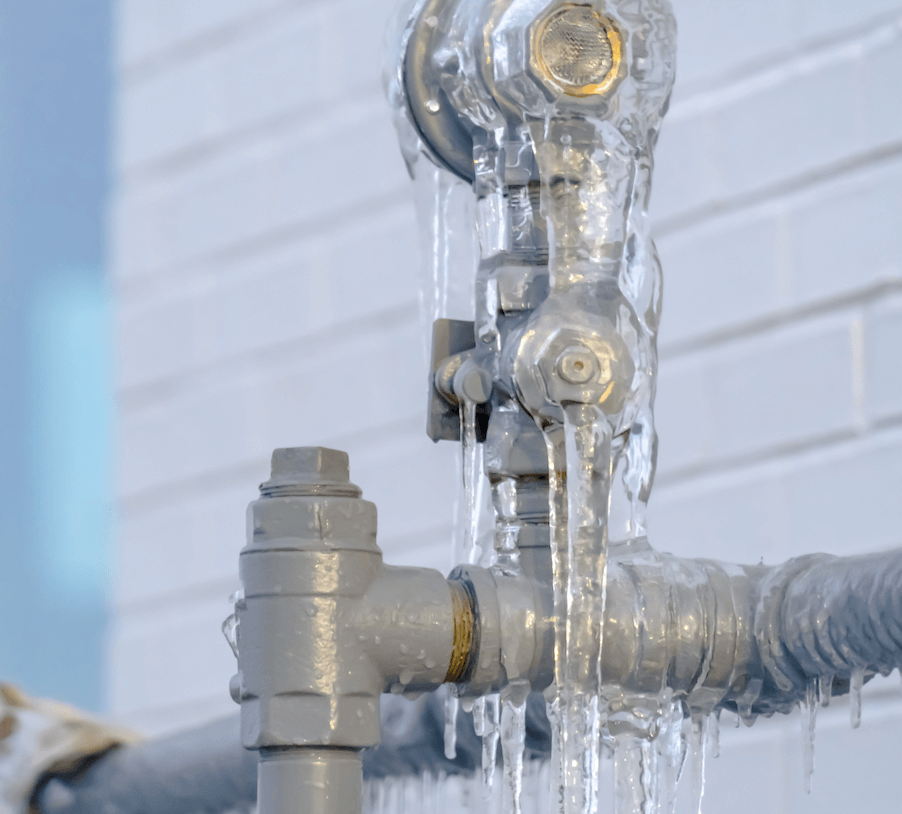Tips to Keep Pipes from Cold Weather Damage: Important Guidance
Tips to Keep Pipes from Cold Weather Damage: Important Guidance
Blog Article
The writer is making several good pointers related to Winter Plumbing Precautions: Preventing Frozen Pipes as a whole in this content underneath.

Winter can damage your pipes, especially by freezing pipelines. Below's how to prevent it from happening and what to do if it does.
Intro
As temperatures decrease, the risk of icy pipes boosts, possibly causing expensive repair services and water damages. Comprehending exactly how to avoid frozen pipes is essential for homeowners in cool environments.
Prevention Tips
Protecting at risk pipes
Cover pipelines in insulation sleeves or utilize heat tape to safeguard them from freezing temperature levels. Focus on pipelines in unheated or exterior locations of the home.
Heating strategies
Maintain interior areas sufficiently heated, particularly locations with pipes. Open cupboard doors to enable warm air to distribute around pipelines under sinks.
Exactly how to recognize icy pipelines
Seek decreased water circulation from taps, uncommon smells or sounds from pipelines, and noticeable frost on subjected pipelines.
Long-Term Solutions
Structural modifications
Think about rerouting pipes far from outside walls or unheated areas. Add added insulation to attics, cellars, and crawl spaces.
Updating insulation
Purchase top notch insulation for pipelines, attics, and walls. Correct insulation helps keep constant temperature levels and decreases the danger of icy pipes.
Shielding Exterior Pipes
Yard hoses and outdoor taps
Detach and drain pipes yard tubes before winter. Set up frost-proof faucets or cover outside taps with protected caps.
Recognizing Frozen Pipelines
What causes pipes to freeze?
Pipes freeze when revealed to temperature levels below 32 ° F (0 ° C) for extended periods. As water inside the pipelines ices up, it expands, putting pressure on the pipe walls and potentially causing them to burst.
Risks and damages
Frozen pipelines can result in water disturbances, residential property damages, and expensive repair work. Ruptured pipes can flooding homes and cause substantial architectural damage.
Indicators of Frozen Pipes
Recognizing frozen pipes early can prevent them from breaking.
What to Do If Your Pipelines Freeze
Immediate actions to take
If you suspect icy pipelines, maintain faucets open up to eliminate stress as the ice melts. Utilize a hairdryer or towels taken in warm water to thaw pipelines slowly.
Verdict
Protecting against icy pipes needs aggressive steps and fast feedbacks. By comprehending the causes, indications, and safety nets, home owners can secure their plumbing throughout winter.
5 Ways to Prevent Frozen Pipes
Drain Outdoor Faucets and Disconnect Hoses
First, close the shut-off valve that controls the flow of water in the pipe to your outdoor faucet. Then, head outside to disconnect and drain your hose and open the outdoor faucet to allow the water to completely drain out of the line. Turn off the faucet when done. Finally, head back to the shut-off valve and drain the remaining water inside the pipe into a bucket or container. Additionally, if you have a home irrigation system, you should consider hiring an expert to clear the system of water each year.
Insulate Pipes
One of the best and most cost-effective methods for preventing frozen water pipes is to wrap your pipes with insulation. This is especially important for areas in your home that aren’t exposed to heat, such as an attic. We suggest using foam sleeves, which can typically be found at your local hardware store.
Keep Heat Running at 65
Your pipes are located inside your walls, and the temperature there is much colder than the rest of the house. To prevent your pipes from freezing, The Insurance Information Institute suggests that you keep your home heated to at least 65 degrees, even when traveling. You may want to invest in smart devices that can keep an eye on the temperature in your home while you’re away.
Leave Water Dripping
Moving water — even a small trickle — can prevent ice from forming inside your pipes. When freezing temps are imminent, start a drip of water from all faucets that serve exposed pipes. Leaving a few faucets running will also help relieve pressure inside the pipes and help prevent a rupture if the water inside freezes.
Open Cupboard Doors
Warm your kitchen and bathroom pipes by opening cupboards and vanities. You should also leave your interior doors ajar to help warm air circulate evenly throughout your home.

We had been made aware of that write-up about Helpful Tips to Prevent Frozen Pipes this Winter from a buddy on a different blog. In case you liked our article if you please make sure you remember to pass it around. Thanks a lot for being here. Return soon.
Book Today Report this page